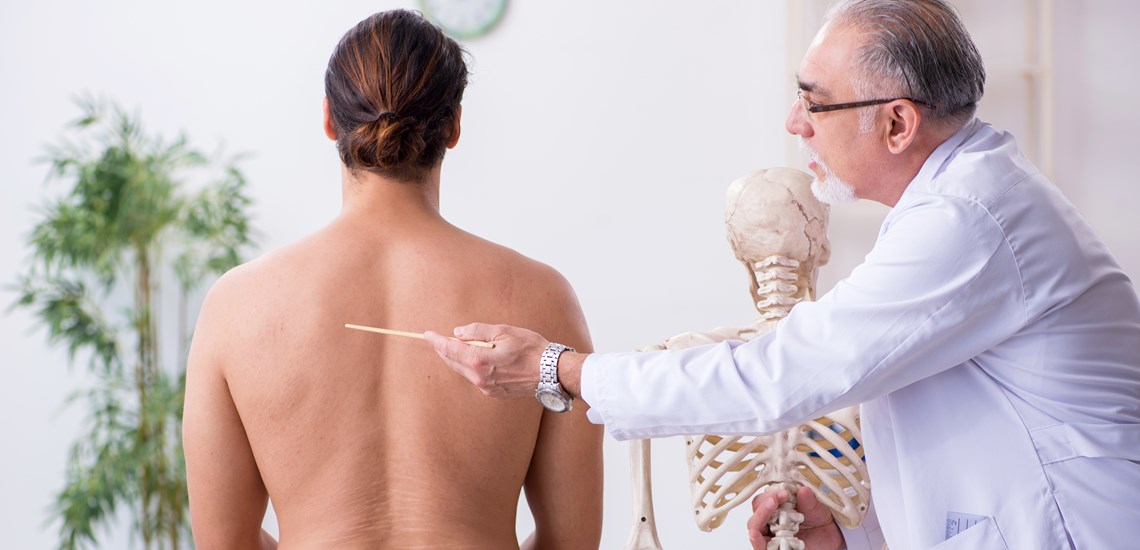Understanding Scoliosis

According to the American Association of Neurological Surgeons, nearly 3 percent of Americans (or roughly 7 million people) are diagnosed with scoliosis. While it's not an overly common condition, understanding scoliosis and knowing what signs to look for in children can increase early detection rates. When found early, those diagnosed with scoliosis are more likely to lead healthy lives with minimal to no discomfort.
What is Scoliosis
Scoliosis is the abnormal curving of the spine, most often identified in children before puberty. A healthy spine creates a straight line down the back. A spine with scoliosis creates more of an "S" or "C" curve because the bones of the spine have titled or rotated. It's unclear what causes most scoliosis cases, but those with a family history of scoliosis may be at higher risk of developing the condition.
There are a few different types of scoliosis:
- Idiopathic- Conditions labeled idiopathic refer to those where the cause of the condition is unknown. Idiopathic scoliosis is the most common type. Patients are diagnosed with idiopathic scoliosis when the other types of scoliosis have been ruled out.
- Congenital- This type of scoliosis happens when the vertebrae in a baby don't correctly form before birth, causing a spine curve. This is the least common form of scoliosis, affecting 1 in 10,000 newborns, according to the American Academy of Orthopedic Surgeons.
- Neuromuscular- When a child has a condition such as cerebral palsy or muscular dystrophy that affects the muscles supporting the spine, it can cause neuromuscular scoliosis. This type of scoliosis tends to progress more rapidly than idiopathic scoliosis.
- Degenerative- This type of scoliosis generally appears in adults aged 65 and older. In degenerative scoliosis, the spine curves due to degeneration of the intervertebral discs and facet joints. Those with degenerative scoliosis may experience discomfort or stiffness in the back or sharp pains in the legs while walking.
Signs and Symptoms of Scoliosis
The most common sign of scoliosis is an abnormal curve of the spine. In mild scoliosis cases, a curve of the spine may not be noticeable, especially if the spine curves gradually and doesn't cause pain. Additional signs of scoliosis can include uneven shoulders, ribs, waist, or hips. While boys and girls can both develop scoliosis, girls tend to have more severe symptoms. If you have an adolescent child and you noticed one or more signs of scoliosis, schedule an appointment with your child's primary caregiver to confirm a diagnosis and decide if treatment is necessary.
Treatment of Scoliosis
While it's unknown what causes the most common type of scoliosis, less common forms of the condition can be caused by infections to the spine, spinal tumors, neuromuscular disorders, or birth defects related to the spine's development. To diagnosis scoliosis, doctors typically perform a physical exam where the patient will bend at the waist to see if the spine curves. If the spine does not appear to be straight, image testing such as an X-ray or MRI may be required to confirm the diagnosis and identify any underlying causes, such as a tumor.
Treatment of scoliosis depends on the severity, location, and pattern of the spinal curve. In general, those with mild scoliosis may not require treatment but are asked to attend regular checkups to monitor any changes. If scoliosis is diagnosed as moderate in a child who's still developing, they may have to wear a brace to prevent further progression. In more severe cases, a doctor may recommend spinal surgery, the most common of which is a spinal fusion. If scoliosis is left untreated, complications could include chronic back pain or damage to the lung and heart. It could also cause physical changes such as uneven hips and protruding ribs.
If you or a loved one has scoliosis or another condition causing discomfort to your back or neck, the team at Mocek Spine Clinic is here to help. Our compassionate team offers advanced spine care solutions and treatment plans designed to relieve chronic pain so patients can continue living with the least amount of pain possible. If you'd like to learn more about our services, give us a call at 501.224.4001 or schedule an appointment online.